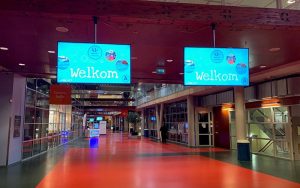Overview & challenges
San Jose State University (SJSU) is one of the oldest public universities in the American state of California. As students slowly started returning to campus post pandemic, one of the key challenges educational institutions faced was ensuring social distancing norms were adhered to strictly and an adept contact tracing solution was in place. SJSU turned to Cisco Spaces as a solution for both these challenges.
A digital transformation with occupancy data
Pre-pandemic, SJSU primarily utilized Cisco Spaces for engagement via dynamic wireless portals, mobile user analytics and engagement. During the return to campus post the pandemic lockdowns, the university partnered with the Cisco Spaces team and began to deploy new use cases using the occupancy data they were receiving on a daily basis.
In early March of 2020 – as I was looking at our Cisco Spaces portal – I saw that we had collected more than 1.6 billion location updates over two years. I tried to imagine how we could use this location data to help ensure people’s safety as they return to the campus.
– Shai Siberman, Former Director of Network Services, San Jose State University
One of the limitations the university faced was its wireless 802.11 deployment, where location accuracy is limited to 9 meters (30 feet). At the time, SJSU was unable to undertake deploying BLE sensors, whose location accuracy is less than two meters. So, the existing wireless network was used to quickly provide a solution for safer return to campus.
Alerts were enabled based on the number of wireless devices in a building. Defining the rules for social distancing, a square footage of 150 per person was allocated to come up with the maximum device capacity in an area. The alerts could be sent via email, SMS, WebEx Bot or WEBHook to a variety of platforms.
The next step was to provide visual cues to visitors and this was done with a digital signage system to display the building’s real-time occupancy level (and maximum occupancy limit) when people enter a building.
Since SJSUs Wireless Controllers (WLCs) were already connected to Cisco Spaces, the university’s floor maps and wireless access point locations from Cisco Prime Infrastructure were imported into the platform. Once the hierarchy is imported into Cisco Spaces, one can configure unlimited capacity alerts and triggers at campus level, building level, within virtual zones, or on any desired AP grouping.
To overcome scenarios where people are not carrying wireless devices the university could issue ‘visitor Wi-Fi badges’. Alternatively integration with Meraki MV cameras (which have video analytics and artificial intelligence built in) enables counting people and feeding the data into Cisco Spaces.
Using just the university’s existing Cisco wireless network and Cisco Spaces, SJSU was able to leverage their existing investments to quickly create a safer return to campus.




